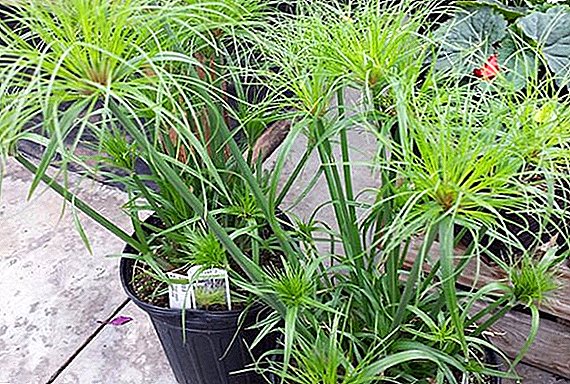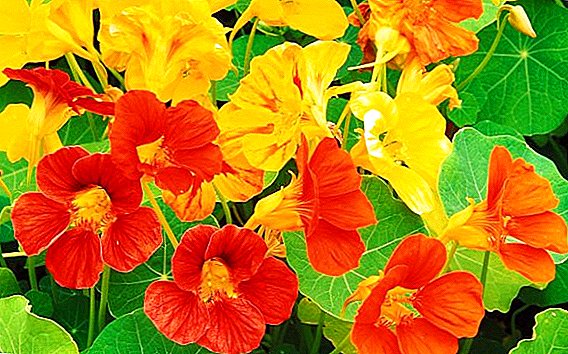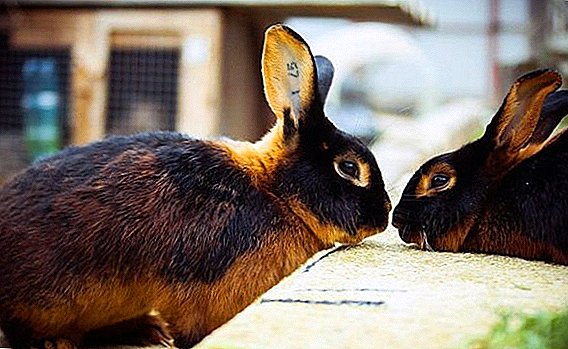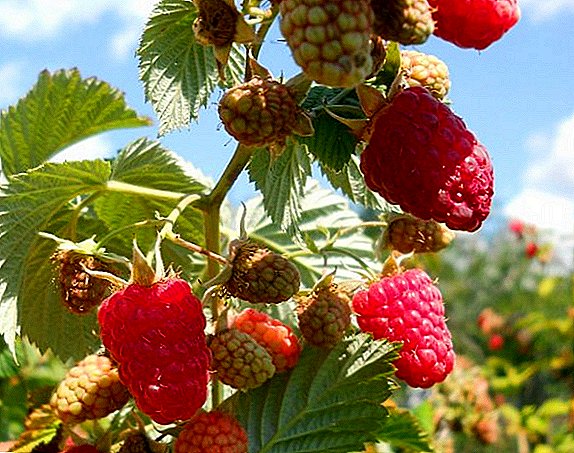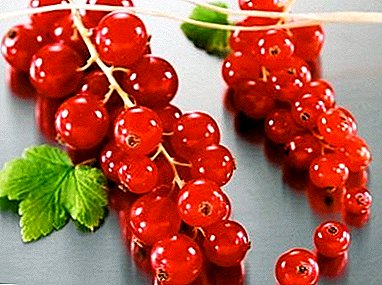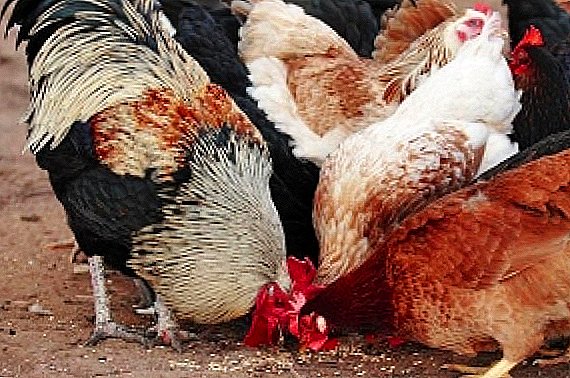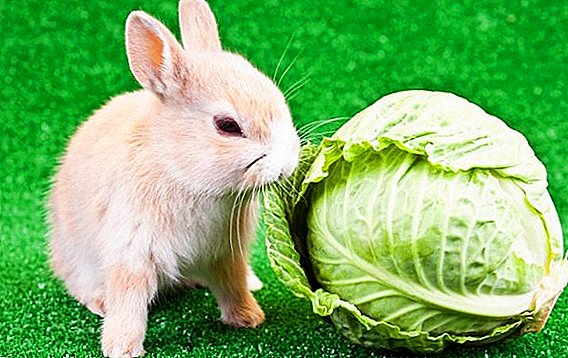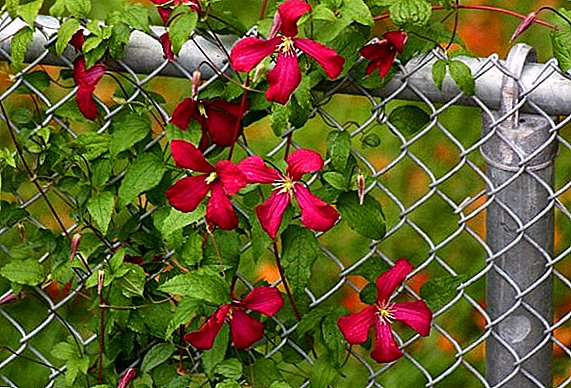 Each housewife wants to decorate with flowers not only a flower bed, but also a gazebo, a terrace next to the house. Climbing perennials will help you here. They will give shade, will please with greens all summer, hiding the flaws of buildings, and the flowers of some of them have a wonderful heady aroma. I propose to consider the most popular species of climbers with their advantages and disadvantages. Note that all curly perennials require good support.
Each housewife wants to decorate with flowers not only a flower bed, but also a gazebo, a terrace next to the house. Climbing perennials will help you here. They will give shade, will please with greens all summer, hiding the flaws of buildings, and the flowers of some of them have a wonderful heady aroma. I propose to consider the most popular species of climbers with their advantages and disadvantages. Note that all curly perennials require good support.
Azarin
A fine example of creepers in the country or near the house is asarina.
Azarina - a plant twisted, used for decoration of terraces and gazebos, and for decorating balconies, alpine slides, rose gardens. In length, the shrub grows from 1.5 to 5 meters depending on the variety. Stems and leaves (in the form of a heart with notches along the edges) are dark green in color, flowers are bell-shaped with an elongated tube of various colors. The plant can quickly braid fences, arbors.
Did you know? The second name of the asarin - Murandia.
 Growing conditions. Asarin is grown from seed, seedlings or cuttings. Climbing perennial flowers are planted in sunny places covered with drafts. The soil should be loose, preferably with drainage and rich in nutrients.
Growing conditions. Asarin is grown from seed, seedlings or cuttings. Climbing perennial flowers are planted in sunny places covered with drafts. The soil should be loose, preferably with drainage and rich in nutrients.
Care. Irrigation of the plant should not be very abundant, during the period of drought irrigation increase. For violent flowering Murandia once a week requires the introduction of phosphate and potash fertilizers. Seedlings are planted with the use of supports, which will eventually become entwined with asarina.
Diseases and pests. Asarina seedlings are exposed to the black stalk. Big bushes can annoy aphid.
The plant is a perennial, every year new sprouts leave it in spring, and the flower self-grows. Continuous moisture in the soil and an ambient temperature of at least +20 ºC are useful for permanent rejuvenation. In order for the flower to endure the winter well, it is best to cover it.
Aconite winding
Next in our list is a climbing perennial plant - aconite.
Important! All parts of the shrub are very poisonous. Working with him, it is necessary to wear gloves.
In length, shoots reach up to 4 meters. Stems aconite curly, 5 mm thick. The leaves are thin, dark green, have a pentagonal outline, dentate, wide. The top of the leaves is shiny, and the bottom is matte. Flowers of irregular shape - purple, blue, white. Blossoms aconite tassels or small umbrellas.  Growing conditions. Aconite winding sprouts well and blooms in shady places. Bush easily tolerates frost, so you can plant it in the fall. The soil should be light, with the use of drainage and fertilizer.
Growing conditions. Aconite winding sprouts well and blooms in shady places. Bush easily tolerates frost, so you can plant it in the fall. The soil should be light, with the use of drainage and fertilizer.
Care. Like all perennial flowers, aconite planted with the use of support. It is necessary to water a flower moderately, because its roots do not like stagnant moisture. During the budding need to make complex fertilizers.
Diseases and pests. The flower often affects powdery mildew and root rot.
Actinidia
The virtue of actinidia is that it not only twists and blossoms well, but also brings delicious fruits.
Did you know? Actinidia is a close relative of kiwi. It is also called Amur gooseberry.The height of the vine reaches up to 7 meters, therefore, when growing actinidia, supports are used. The stems are tree-like, the leaves of an ovoid shape tend to change color. After winter, the leaves are brown, then they begin to turn green, before flowering, the tips turn white, after flowering they turn pink, before the fruits ripen the leaves become crimson. The shrub buds are large, creamy or green-white in color, have a light fragrance. The fruits of actinidia are similar to kiwi.
 Growing conditions. Planted Actinidia layering or cuttings. Preference is given to the southern not shaded areas. To the ground actinidia unpretentious.
Growing conditions. Planted Actinidia layering or cuttings. Preference is given to the southern not shaded areas. To the ground actinidia unpretentious.Care. It is necessary to water an actinidia, irrigating it in the morning or evening. To avoid drying, the soil around the plant is mulched. Feeding the actinidia carried out in three stages: in early spring, during fruit set and in autumn. Since the bush is woody, it needs to be cut periodically.
Diseases and pests. Most often, the plant is affected by powdery mildew, phyllossticosis, fruit rot. Great harm is caused by leaf beetles, bark beetles, and gilded eyes.
Amur Grape
Amur grape is a vine with a thickness of 10 cm and a height of shoots up to 20 meters. The shape of the leaves is different - from ovoid to palmate, blooms in small flowers, collected in a brush. Flowers have a pleasant honey smell. Leaf color is dark green. The clusters are small, the berries are dark blue.  Growing conditions. The grapes are sun-sweet, so they require landing on the sun. He prefers acidic drainage soils.
Growing conditions. The grapes are sun-sweet, so they require landing on the sun. He prefers acidic drainage soils.
Important! Amur grapes do not tolerate drafts. With light frosts and strong winds shrub dies.
Care. The plant requires abundant watering, pruned it on time. Fertilizing organic matter can cause a number of diseases.
Diseases and pests. If you do not follow the rules for care, powdery mildew or oidium can strike the bush.
Wisteria (Wisteria)
One of the most beautiful lianas for vertical gardening is wisteria. It grows up to 6 meters in height. Shoots of plants are twisted to the left, dendroid. Peristosyllabic leaves, green; fall yellow in the fall. It blooms with hanging garlands, tassels up to 30 cm in pink, white or bluish-purple hue, the flowers have the shape of a boat, the smell is fragrant.
Did you know? According to Chinese legend, the hanging paint brushes are the braids of the beautiful Gui, torn by a dragon..
 Growing conditions. Planted wisteria seeds or seedlings. Grows and blooms best in warm, sunny, protected areas. Requires powerful supports, fertile land.
Growing conditions. Planted wisteria seeds or seedlings. Grows and blooms best in warm, sunny, protected areas. Requires powerful supports, fertile land.Care. Summer requires abundant watering. Trimming is carried out in the middle of summer in order to control growth. For violent flowering, it is necessary to irrigate the bush weekly and alternate the application of mineral and organic fertilizers.
Diseases and pests. Often affected by aphids, cicadas, renal pyriculosis, chlorosis.
Pedicel hydrangea
This is one of the relatives of the dendroid hydrangea. According to the structure, the stem of a stalked hydrangea is similar to a liana. Shrub reaches a height of 8 meters. The flowers are small vines, collected in small brushes, white or pale pink with a pleasant honey aroma. The trunk is red-brown in color with suckers, leaves of dark green color, shiny, with jagged edges, have the shape of an ellipse or egg. 
Important! To ligne the vines in the winter, you must stop fertilizing from the middle of summer.
Growing conditions. For good growth of hydrangea requires a soil with a high content of humus. The bush does not like lime and sandy soils. Planted plants layering or cuttings. Planted hydrangea is petioled in shaded areas protected from drafts. For growing shrubs need strong supports or walls.
Care. Liana needs plenty of irrigation once a week. If there is a lot of rain, it is enough to irrigate once a month. Fertilize liana 4 times during the growing season and once in the winter.
Diseases and pests. Often exposed to diseases such as chlorosis, powdery mildew, gray mold.
Girlish grapes
Girlish grapes are perfect for arranging gazebos, protect from the wind and cover from prying eyes. A distinctive feature of the maiden grape is the rapid ability to braid supports. The length of the stems is up to 25 meters, the leaves are dark green, oval, with jagged edges. Flowers green inconspicuous, collected in small inflorescences. Smell - sweet and sour. Fruits are small, dark blue. 
Did you know? This grape is also called girlish. From the Greek partenos kisses translated as virgin ivy.
Growing conditions. For the cultivation of grapes suitable as sunny places, and shade. The soil must be fertile. Planted plants cuttings.
Care. The plant does not require frequent watering. It is necessary to fertilize once a month throughout the entire period of growth.
Diseases and pests. Perennial weedlings are resistant to diseases and pests.
Honeysuckle
Honeysuckle on the fence can be a beautiful decoration. This plentifully blossoming liana on a support grows up to 6 meters. The leaves on top of the dark green, fused in the corners, like a plate. Aroma of a flower fragrant, amplifies by the evening. The flowers are tubular, collected in inflorescences, the bud length is about 5 cm. The honeysuckle can be monochromatic (white, cream) or two-tone - purple-red, red, purple-pink outside and cream, white, cream-yellow - inside. 
Important! Honeysuckle flowering time - from the beginning to the end of the growing season.
Growing conditions. Does not like dry and sour soil. It grows better on fertile soils. Prefers sunny places, well tolerated partial shade. Propagated by cuttings, seeds.
Care. When grown on poor soils requires the introduction of mineral fertilizers in the spring. Needs regular pruning to form a beautiful bush. Does not require frequent watering.
Diseases and pests. During a drought in May, aphids may be affected.
Clematis
One of the most abundant flowering vines is considered to be clematis. Leaves of ruby color, trifoliate. Flowers with a diameter of up to 10 cm, star-shaped. The colors vary in shades: white, blue, purple, lilac, blue, pink, red. The height of the shrub reaches 10 m in dendroid varieties.
Did you know? Clematis got its name from the Greek word klema, which translated means climbing plant..
 Growing conditions. The plant loves the light, you need to cover from the wind. The land should be drained, fertile, not sour.
Growing conditions. The plant loves the light, you need to cover from the wind. The land should be drained, fertile, not sour.Care. Soil need to mulch. The plant requires abundant soil moisture (once a week) and appropriate fertilizer.
Diseases and pests. Most often, clematis suffer from diseases such as wilting, rust, fungal disease.
Knyazhiki
The shrubs of the prince have a tree trunk, which clings to the support with the help of twisting leaf petioles. The height of the vine is 3 meters, the leaves are carved. Princes are blooming with blue, pink, purple, white or purple flowers hanging down. The diameter of the bud is 10 cm, the flowers are arranged one by one in the leaf axils.
Growing conditions. Planted princes seeds. For bright violent flowering, the bush is placed in semi-shaded areas, well protected from strong winds. To soil the plant unpretentious. The main thing is the absence of water stagnation. 
Important! The plant requires pruning every 4 years, because flowering occurs only on old shoots.
Care. Due to the long roots of the adult vine does not need frequent hydration. Soil around the bush mulch. Fertilize no more than 2 times a month.
Diseases and pests. Shrub most often falls ill with powdery mildew and rust.
Climbing Rose
There is no better creeper for a gazebo than climbing rose. The shoots of the bush are arcuate, up to 5 meters long. This robust climber, resistant to the whims of nature, has a wonderful strong aroma. Buds with a diameter of 12 cm are collected in brushes of 5-7 pieces. The palette of colors varied. 
Did you know? In Germany, in the city of Hildesheim near the cathedral grows climbing rose, which is more than 1000 years old.
Growing conditions. Roses need sunny and blown places. Preferably loamy humus-rich soil.
Care. Moisturize shrubs rarely, but generously. During the period of active growth requires four fertilizing different fertilizers.
Diseases and pests. In humid hot weather ill powdery mildew.
Ivy
The best climbing plant is ivy. The advantages of this vine include its decoration, simplicity and ease of reproduction. The leaves of ivy are three- or five-toed, dark green with light streaks. Shrub can climb to a height of 15 meters. Flowers of small size, green, collected in umbrella inflorescences. Due to the large green mass, ivy is considered an air purifier.  Growing conditions. To the ground ivy is not demanding. Put it in the shaded lit areas.
Growing conditions. To the ground ivy is not demanding. Put it in the shaded lit areas.
Care. Due to the superficial roots, ivy needs frequent generous watering. The ground around the bush mulch peat or sawdust. For an active set of green mass ivy requires regular feeding.
Diseases and pests. Ivy is exposed to the invasion of scutes, thrips, ticks.


